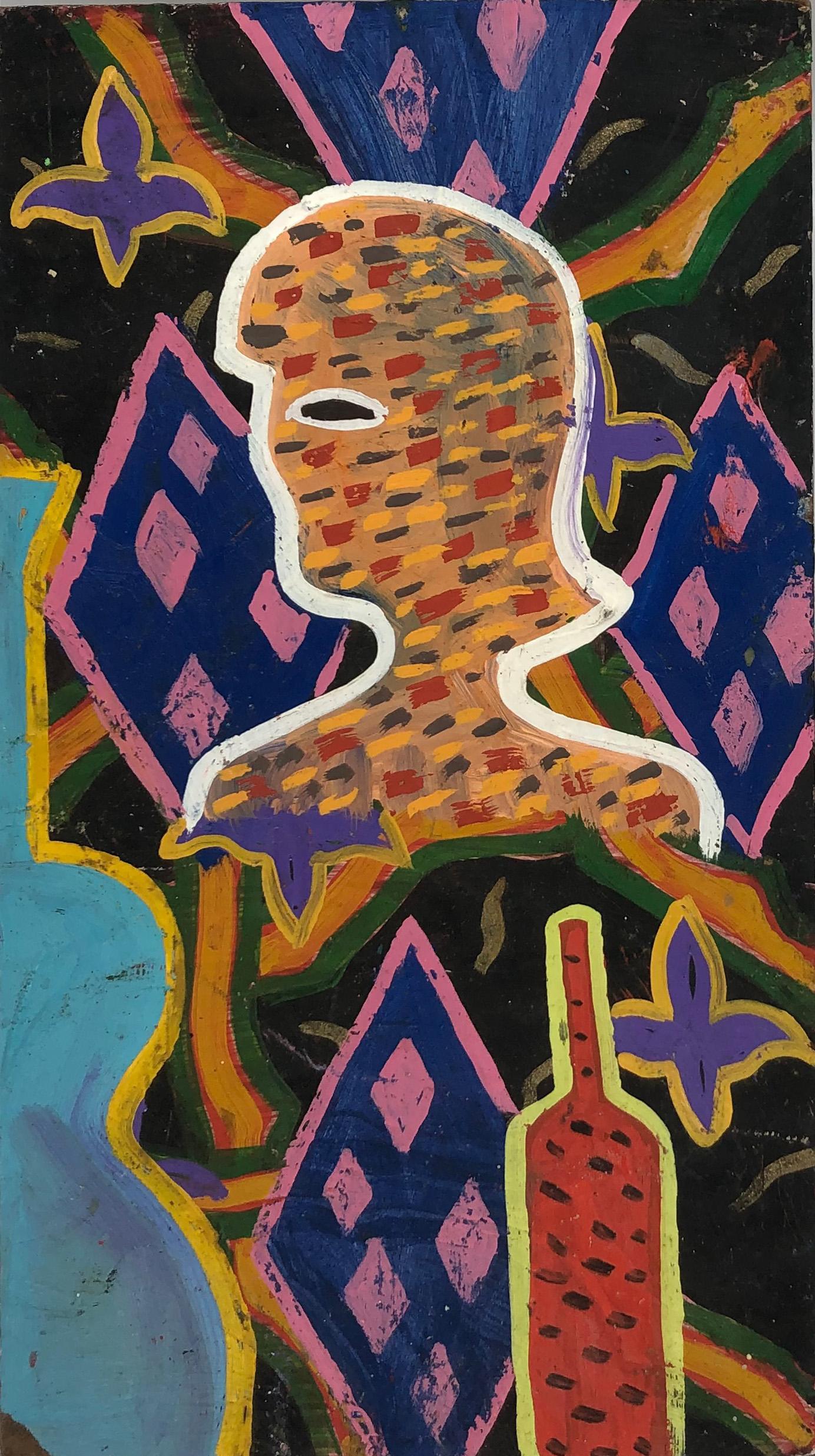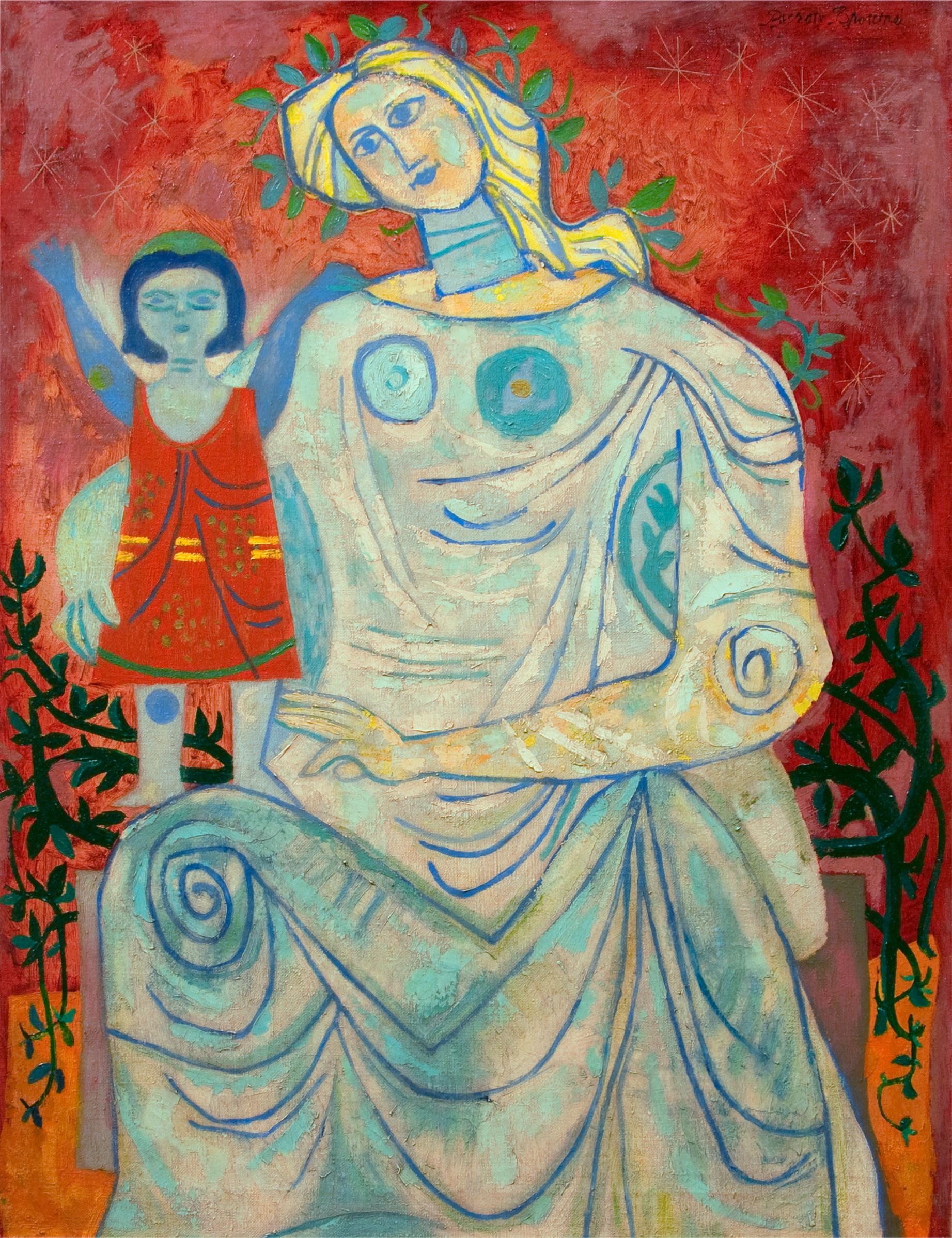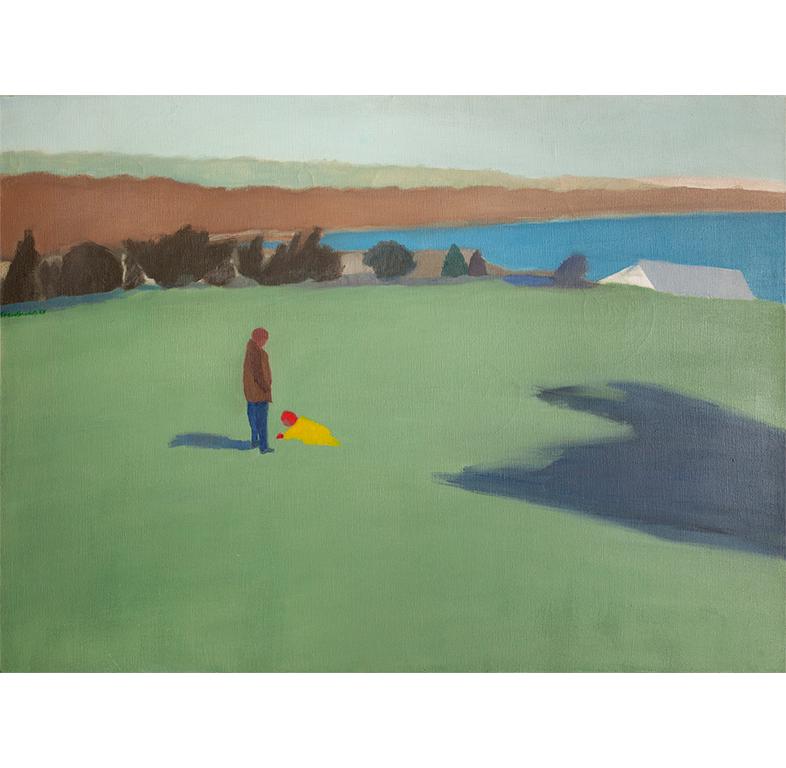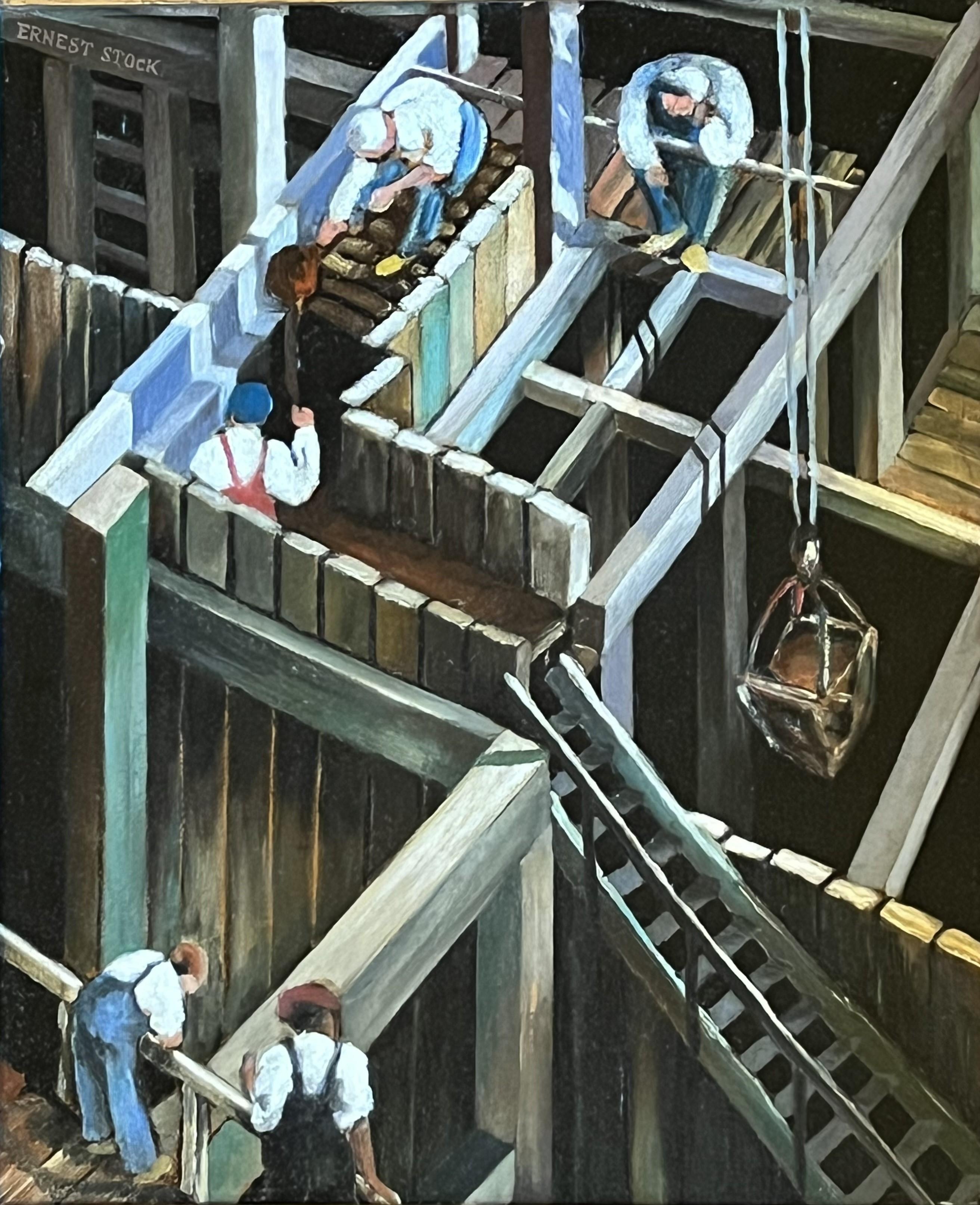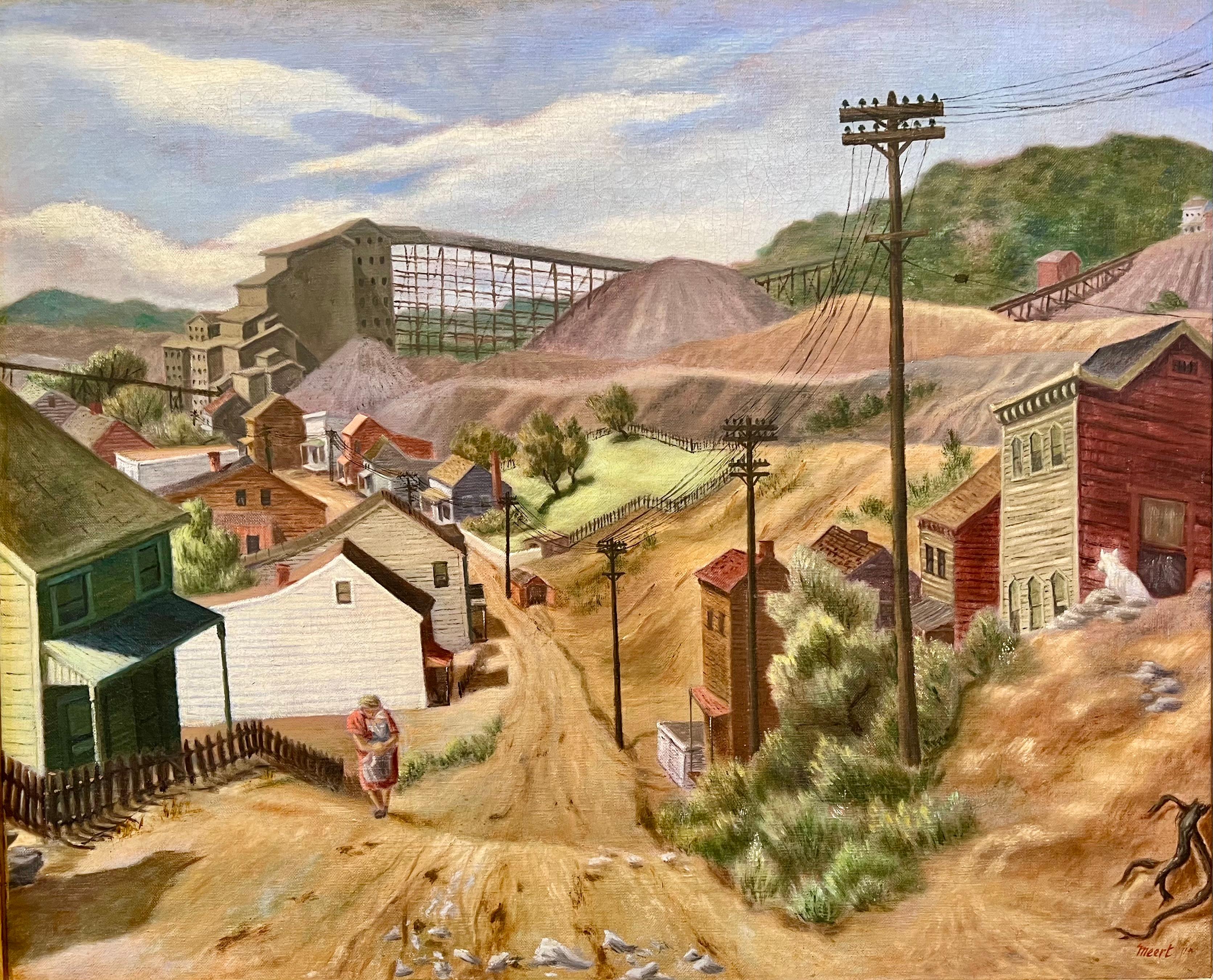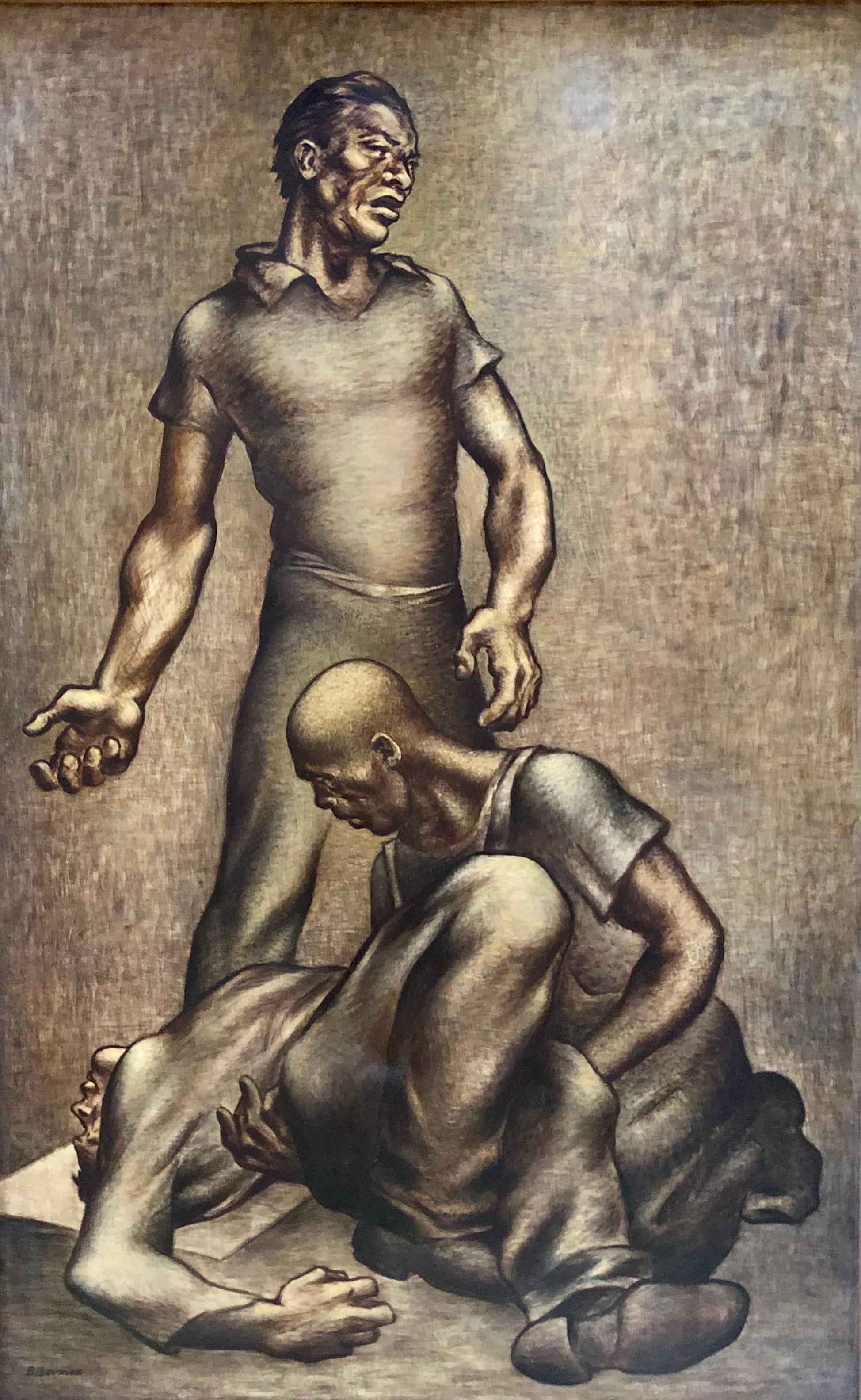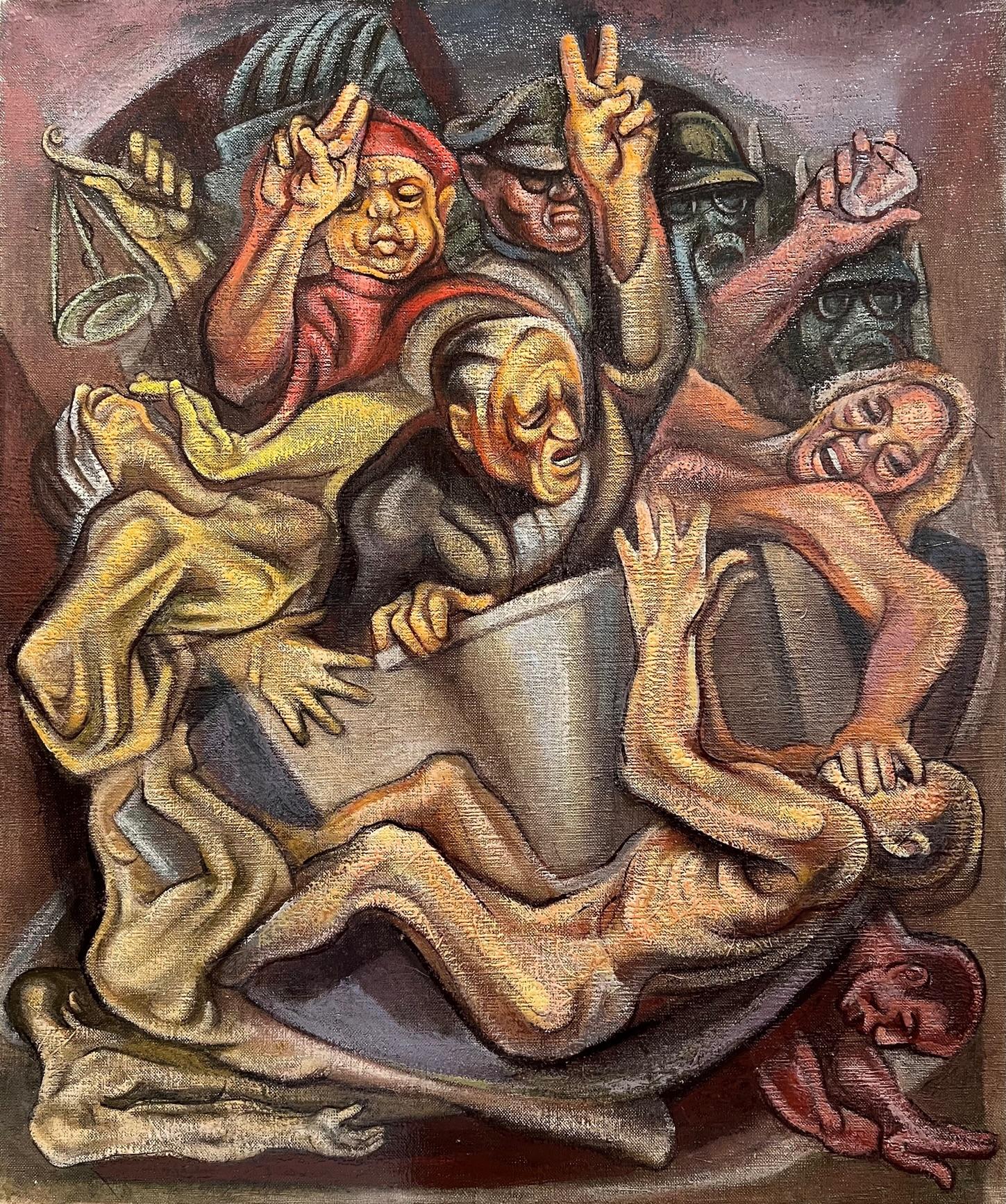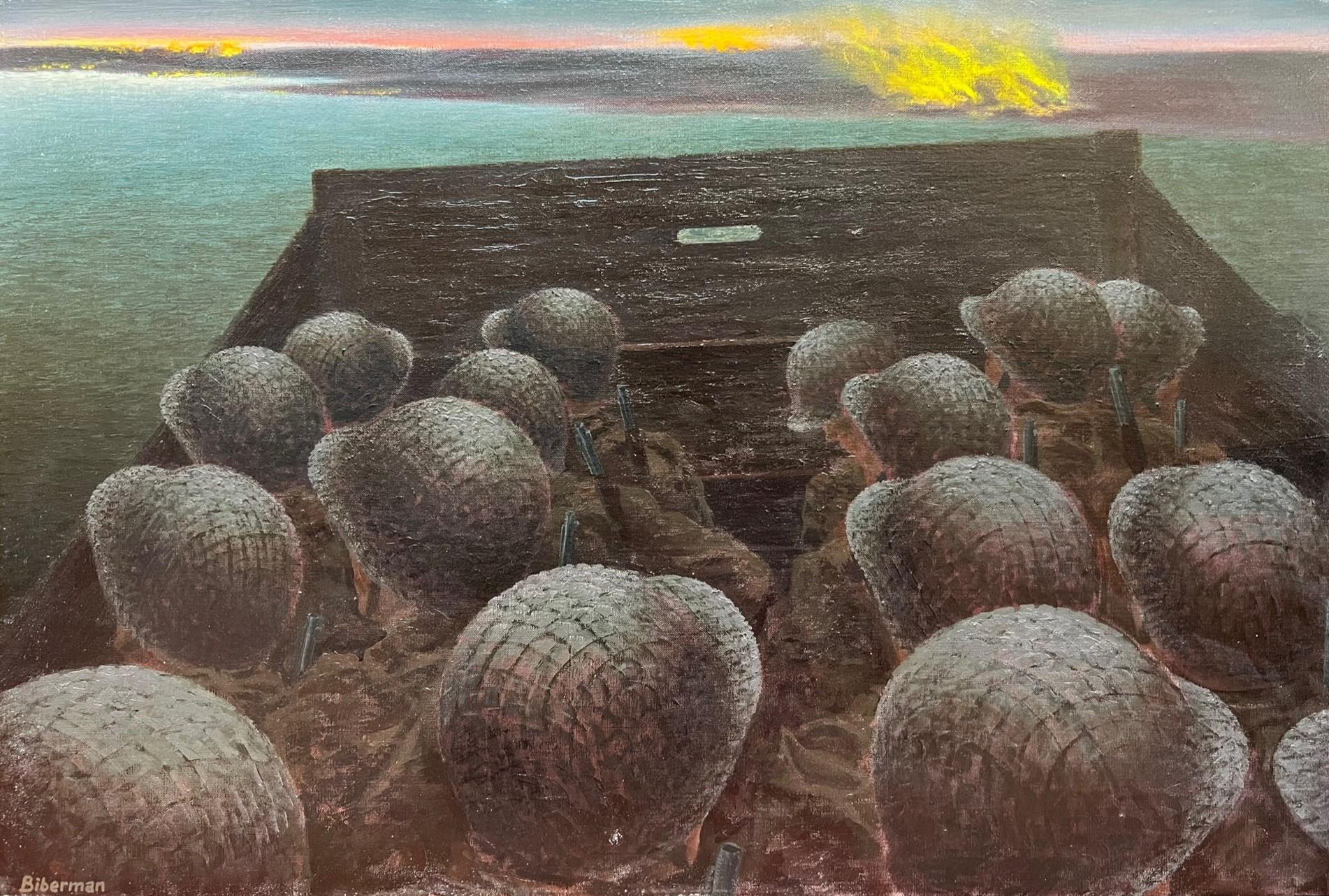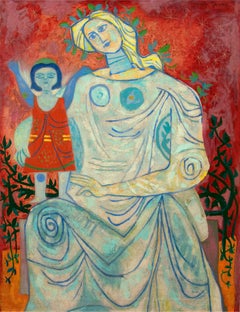Picnic
View Similar Items
Want more images or videos?
Request additional images or videos from the seller
1 of 6
Anton RefregierPicnic1959
1959
About the Item
- Creator:Anton Refregier (1905 - 1979, American)
- Creation Year:1959
- Dimensions:Height: 31.5 in (80.01 cm)Width: 51.5 in (130.81 cm)
- Medium:
- Movement & Style:
- Period:
- Condition:
- Gallery Location:Long Island City, NY
- Reference Number:1stDibs: LU466660142
About the Seller
4.8
Platinum Seller
These expertly vetted sellers are 1stDibs' most experienced sellers and are rated highest by our customers.
Established in 1979
1stDibs seller since 2014
2,694 sales on 1stDibs
More From This SellerView All
- Woman with CatBy Marshall GoodmanLocated in Long Island City, NYArtist: Marshall Goodman, American (1916 - 2003) Title: Woman with Cat Year: circa 1960 Medium: Oil on Canvas Size: 31 x 20 in. (78.74 x 50.8 cm)Category
1960s American Modern Figurative Paintings
MaterialsOil
- Clown and NudeBy Marshall GoodmanLocated in Long Island City, NYArtist: Marshall Goodman, American (1916 - 2003) Title: Clown and Nude Year: 1960 Medium: Oil on Board, signed and dated Size: 25 x 30 in. (63.5 x 76.2 cm) Frame Size: 28.5 x 34 inchesCategory
1960s American Modern Figurative Paintings
MaterialsOil
- Children Playing, Oil Painting by Marshall GoodmanBy Marshall GoodmanLocated in Long Island City, NYArtist: Marshall Goodman, American (1916 - 2003) Title: Children Playing Year: circa 1960 Medium: Oil on Canvas, signed l.r. Size: 30 x 25 in. (76.2 x 63.5 cm)Category
1960s American Modern Figurative Paintings
MaterialsCotton Canvas, Oil
- Television, Oil Painting by B.G. BradleyLocated in Long Island City, NYArtist: B.G. Bradley, Americn XXth Title: Television Year: circa 1950 Medium: Oil on Masonite, signed 'BGB' l.r. Size: 20 x 24 inches Frame: 25 x 29 inchesCategory
1950s American Modern Figurative Paintings
MaterialsOil
- Garcon in CafeBy David AzuzLocated in Long Island City, NYArtist: David Azuz, Israeli/French (1942 - 2014) Title: Garcon in Cafe Year: circa 1979 Medium: Oil on Paper, signed l.l. Size: 24.5 x 19 in. (62.23 x 48.26 cm) Frame Size: 36 x 30 i...Category
1970s American Modern Figurative Paintings
MaterialsOil, Archival Paper
- Concert, Figurative Oil Painting by William HarndenBy William HarndenLocated in Long Island City, NYArtist: William Harnden, American (1920 - 1983) Title: Concert Medium: Oil on Masonite, signed Image Size: 15.5 x 20 inches Frame Size: 22.5 x 27 inchesCategory
1950s American Modern Figurative Paintings
MaterialsMasonite, Oil
You May Also Like
- Acadian Girl with DiamondsBy FPA Francis Pavy ArtistLocated in Lafayette, LAthe medium for this small painting is oil on Masonite. The painting shows a silhouette of a woman surrounded by diamonds fleur-de-lis's, a guitar and a bottle. on the reverse it reads: ACADIAN GIRL WITH DIAMONDS, © FRANCIS X PAVY...Category
Early 2000s American Modern Figurative Paintings
MaterialsOil
- 2 Girl StudyBy FPA Francis Pavy ArtistLocated in Lafayette, LAThis small word depicts two women with different hairstyles. The heads of the women are painted black with a yellow outline and blue spots in the interior. The background has red triangles with white centers and a block in the middle. The background is gold with green stripes around the triangles. On the reverse it reads:© Francis Pavy 2002, all rights reserved, #16102, 2 girl...Category
Early 2000s American Modern Figurative Paintings
MaterialsOil
- Mother and Child -- 1949By Byron BrowneLocated in Washington, DCBryon Browne was an important American modernist painter. Signed upper right; signed, dated and situated 'New York' on reverseCategory
1940s American Modern Figurative Paintings
MaterialsCanvas, Oil
- Southdown Field at Long Island Sound Beach Parent and childBy Stan BrodskyLocated in Brookville, NYThis large green field overlooking the Long Island Sound Beach depicts a parent without definition, mother or father, observing their child in the gr...Category
1960s American Modern Figurative Paintings
MaterialsOil
- Six O'ClockLocated in Los Angeles, CASix O-Clock, c. 1942, oil on canvas, 30 x 20 inches, signed and titled several times verso of frame and stretcher (perhaps by another hand), marked “Rehn” several times on frame (for the Frank K. M. Rehn Galleries in New York City, who represented Craig at the time); Exhibited: 1) 18th Biennial Exhibition of Contemporary American Oil Paintings from March 21 to May 2, 1943 at The Corcoran Gallery of Art in Washington, D.C. #87, original price $450 (per catalog) (exhibition label verso), 2) Craig’s one-man show at the Frank K. M. Rehn Galleries, New York City, from October 26 to November 14, 1942, #10 (original price listed as $350); and 3) Exhibition of thirty paintings sponsored by the Harrisburg Art Association at the State Museum of Pennsylvania in Harrisburg in March, 1944 (concerning this exhibit, Penelope Redd of The Evening News (Harrisburg, Pennsylvania) wrote: “Other paintings that have overtones of superrealism inherent in the subjects include Tom Craig’s California nocturne, ‘Six O’Clock,’ two figures moving through the twilight . . . .” March 6, 1944, p. 13); another label verso from The Museum of Art of Toledo (Ohio): original frame: Provenance includes George Stern Gallery, Los Angeles, CA About the Painting Long before Chris Burden’s iconic installation outside of the Los Angeles County Museum of Art, Urban Light, another artist, Tom Craig, made Southern California streetlights the subject of one of his early 1940s paintings. Consisting of dozens of recycled streetlights from the 1920s and 1930s forming a classical colonnade at the museum’s entrance, Burden’s Urban Light has become a symbol of Los Angeles. For Burden, the streetlights represent what constitutes an advanced society, something “safe after dark and beautiful to behold.” It seems that Craig is playing on the same theme in Six O-Clock. Although we see two hunched figures trudging along the sidewalk at the end of a long day, the real stars of this painting are the streetlights which brighten the twilight and silhouette another iconic symbol of Los Angeles, the palm trees in the distance. Mountains in the background and the distant view of a suburban neighborhood join the streetlights and palm trees as classic subject matter for a California Scene painting, but Craig gives us a twist by depicting the scene not as a sun-drenched natural expanse. Rather, Craig uses thin layers of oil paint, mimicking the watercolor technique for which he is most famous, to show us the twinkling beauty of manmade light and the safety it affords. Although Southern California is a land of natural wonders, the interventions of humanity are already everywhere in Los Angeles and as one critic noted, the resulting painting has an air of “superrealism.” About the Artist Thomas Theodore Craig was a well-known fixture in the Southern California art scene. He was born in Upland California. Craig graduated with a degree in botany from Pomona College and studied painting at Pamona and the Chouinard Art School with Stanton MacDonald-Wright and Barse Miller among others. He became close friends with fellow artist Milford Zornes...Category
1940s American Modern Landscape Paintings
MaterialsCanvas, Oil
$12,500 - Subway ConstructionLocated in Los Angeles, CAThis painting is part of our exhibition American Coast to Coast: Artists of the 1930s Subway Construction, c. 1928, oil on board, 19 x 15 ¾ inches, signed upper left, artist and title verso; exhibited: 1) 12th Annual Exhibition of the Society of Independent Artists, The Waldorf Astoria, New York NY, from March 9 to April 1, 1928, no. 864 (original price $250) (see Death Prevailing Theme of Artists in Weird Exhibits, The Gazette (Montreal, Quebec, Canada), March 8, 1928); 2) Boston Tercentenary Exhibition Fine Arts and Crafts Exhibition, Horticultural Hall, Boston MA, July, 1930, no. 108 (honorable mention - noted verso); 3) 38th Annual Exhibition of American Art, Cincinnati Art Museum, Cincinnati, OH, June, 1931 (see Alexander, Mary, The Week in Art Circles, The Cincinnati Enquirer, June 7, 1931); and 4) National Art Week Exhibition [Group Show], Montross Gallery, New York, New York, December, 1940 (see Devree, Howard, Brief Comment on Some Recently Opened Exhibitions in the Galleries, The New York Times, December 1, 1940) About the Painting Ernest Stock’s Subway Construction depicts the excavation of New York’s 8th Avenue line, which was the first completed section of the city-operated Independent Subway System (IND). The groundbreaking ceremony was in 1925, but the line did not open until 1932, placing Stock’s painting in the middle of the construction effort. The 8th Avenue line was primarily constructed using the “cut and cover” method in which the streets above the line were dug up, infrastructure was built from the surface level down, the resulting holes were filled, and the streets reconstructed. While many artists of the 1920s were fascinated with the upward thrust of New York’s exploding skyline as architects and developers sought to erect ever higher buildings, Stock turned his attention to the engineering marvels which were taking place below ground. In Subway Construction, Stock depicts workers removing the earth beneath the street and building scaffolding and other support structures to allow concrete to be poured. Light and shadow fall across the x-shaped grid pattern formed by the wooden beams and planks. It is no surprise that critics reviewing the painting commented on Stock’s use of an “interesting pattern” to form a painting that is “clever and well designed.” About the Artist Ernest Richard Stock was an award-winning painter, print maker, muralist, and commercial artist. He was born in Bristol, England and was educated at the prestigious Bristol Grammar School. During World War I, Stock joined the British Royal Air Flying Corps in Canada and served in France as a pilot where he was wounded. After the war, he immigrated to the United States and joined the firm of Mack, Jenny, and Tyler, where he further honed his architectural and decorative painting skills. During the 1920s, Stock often traveled back and forth between the US and Europe. He was twice married, including to the American author, Katherine Anne Porter. Starting in the mid-1920s, Stock began to exhibit his artwork professionally, including at London’s Beaux Arts Gallery, the Society of Independent Artists, the Salons of America, the Cincinnati Art Museum, the Whitney Studio and various locations in the Northeast. Critics often praised the strong design sensibility in Stock’s paintings. Stock was a commercial illustrator for a handful of published books and during World War II, he worked in the Stratford Connecticut...Category
1920s American Modern Figurative Paintings
MaterialsOil
